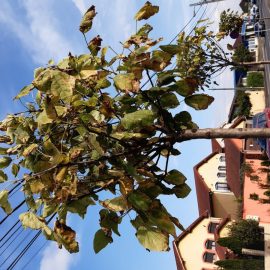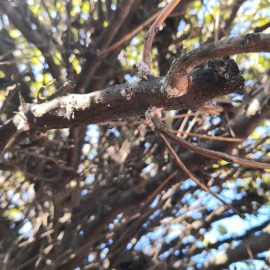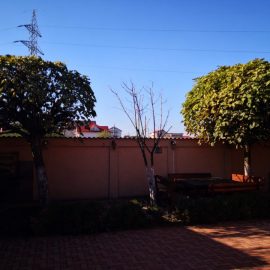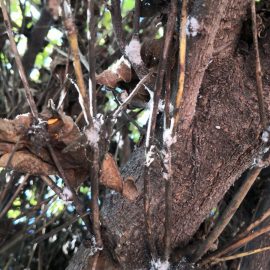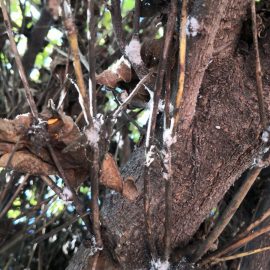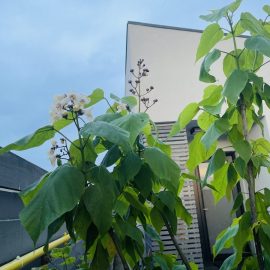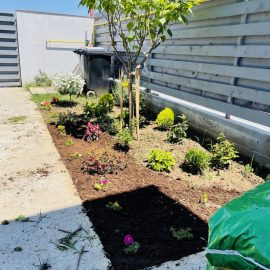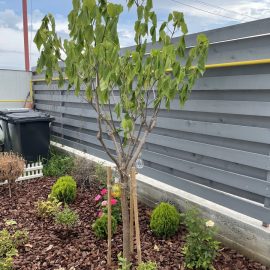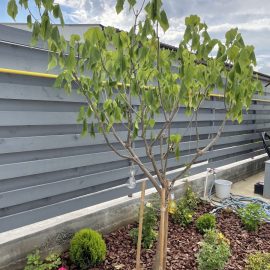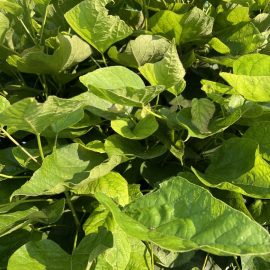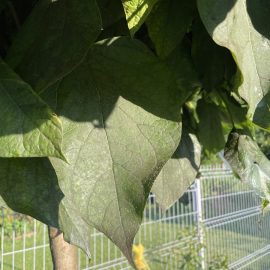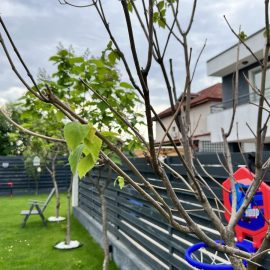Catalpa, planting guide and care work
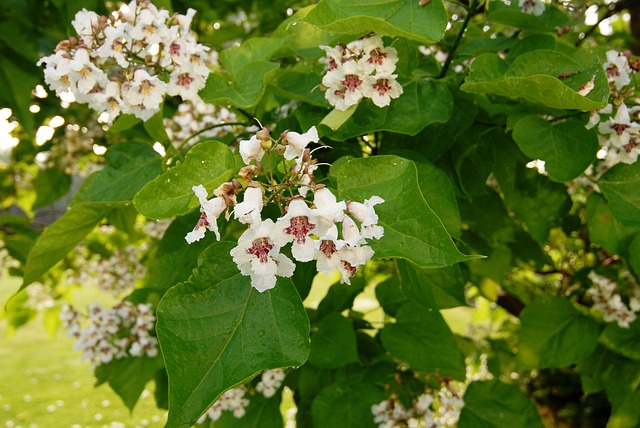
Catalpa (Catalpa) is a genus of flowering trees in the Bignoniaceae family, native to Central and North America and East Asia. It is commonly encountered in the warm areas of subtropical and temperate climates. They are deciduous trees, size III-II. They reach 12-18 m in height, with a crown diameter of 6-12 m. They grow very fast. The leaves are green and cordate. Some species have trilobate leaves. Flowering takes place in summer. The flowers grow in panicles and are white-yellow. The fruits develop in late summer, early autumn. They are droopy silique, 20-40 cm long. It bears small, “winged” seeds. It is planted as an ornamental tree in parks and gardens. It can be planted alone or in groups and alignments. Wood is easy to process, so it is used in the manufacture of certain pieces of furniture.





Species and varieties
Catalpa bignonioides (southern catalpa) grows as a tall tree (size III) and it is native to the United States. It has an irregular, short trunk. It forms a wide globular crown. The leaves are light green, fluffy on the underside. They give off an unpleasant odor when rubbed. The fruits do not fall off until the cold season.
Catalpa speciosa (northern catalpa) is a species native to the United States. In its natural environment, it is a massive tree, but in Romania, for example, it grows to size II. It has a straight trunk and a pyramidal crown. The leaves are odorless and larger than those of C. bignonioides.
Environmental conditions
Light. It grows optimally in bright light, but it also withstands partial shade.
Temperature. These are trees that prefer a warmer climate. C. speciosa is more resistant to low temperatures but can be affected by late frosts. It should be planted in places protected from cold winds.
Soil. They need deep, fertile soils. The soil must be maintained damp. Catalpa does not tolerate drought.
Fertilization
To stimulate their rich growth, during the vegetative growth period, it is recommended to apply specific fertilizers.
Recommended products
-
You can find products on a different store
Change Store -
You can find products on a different store
Change Store -
You can find products on a different store
Change Store -
You can find products on a different store
Change Store -
You can find products on a different store
Change Store -
You can find products on a different store
Change Store -
You can find products on a different store
Change Store -
You can find products on a different store
Change Store -
You can find products on a different store
Change Store -
You can find products on a different store
Change Store -
You can find products on a different store
Change Store -
You can find products on a different store
Change Store -
You can find products on a different store
Change Store -
You can find products on a different store
Change Store -
You can find products on a different store
Change Store -
You can find products on a different store
Change Store -
You can find products on a different store
Change Store -
You can find products on a different store
Change Store -
You can find products on a different store
Change Store -
You can find products on a different store
Change Store -
You can find products on a different store
Change Store -
You can find products on a different store
Change Store -
You can find products on a different store
Change Store -
You can find products on a different store
Change Store
Planting
Planting should be done in spring or autumn, during the vegetative dormancy period, at temperatures above 5° C, if the soil is not frozen and there is no danger of frost. Be sure to purchase planting material from authorized nurseries. Immediately after planting, water abundantly, then keep the soil moist.
Propagation
Catalpa can be propagated through seeds, sown in spring. In colder areas, sowing should be done in greenhouses.
Recommended products
-
You can find products on a different store
Change Store -
You can find products on a different store
Change Store -
You can find products on a different store
Change Store -
You can find products on a different store
Change Store -
You can find products on a different store
Change Store -
You can find products on a different store
Change Store -
You can find products on a different store
Change Store -
You can find products on a different store
Change Store -
You can find products on a different store
Change Store -
You can find products on a different store
Change Store -
You can find products on a different store
Change Store -
You can find products on a different store
Change Store -
You can find products on a different store
Change Store -
You can find products on a different store
Change Store -
You can find products on a different store
Change Store -
You can find products on a different store
Change Store -
You can find products on a different store
Change Store -
You can find products on a different store
Change Store -
You can find products on a different store
Change Store -
You can find products on a different store
Change Store -
You can find products on a different store
Change Store -
You can find products on a different store
Change Store -
You can find products on a different store
Change Store -
You can find products on a different store
Change Store
Diseases and pests
The most common disease that can affect these trees is verticillium. The pests that can occur most often in Catalpa trees are aphids.
Recommended products
-
You can find products on a different store
Change Store -
You can find products on a different store
Change Store -
You can find products on a different store
Change Store -
You can find products on a different store
Change Store -
You can find products on a different store
Change Store -
You can find products on a different store
Change Store -
You can find products on a different store
Change Store -
You can find products on a different store
Change Store -
You can find products on a different store
Change Store -
You can find products on a different store
Change Store -
You can find products on a different store
Change Store -
You can find products on a different store
Change Store -
You can find products on a different store
Change Store -
You can find products on a different store
Change Store -
You can find products on a different store
Change Store -
You can find products on a different store
Change Store -
You can find products on a different store
Change Store -
You can find products on a different store
Change Store -
You can find products on a different store
Change Store -
You can find products on a different store
Change Store -
You can find products on a different store
Change Store -
You can find products on a different store
Change Store -
You can find products on a different store
Change Store -
You can find products on a different store
Change Store
Recommended products
-
You can find products on a different store
Change Store -
You can find products on a different store
Change Store -
You can find products on a different store
Change Store -
You can find products on a different store
Change Store -
You can find products on a different store
Change Store -
You can find products on a different store
Change Store -
You can find products on a different store
Change Store -
You can find products on a different store
Change Store -
You can find products on a different store
Change Store -
You can find products on a different store
Change Store -
You can find products on a different store
Change Store -
You can find products on a different store
Change Store -
You can find products on a different store
Change Store -
You can find products on a different store
Change Store -
You can find products on a different store
Change Store -
You can find products on a different store
Change Store -
You can find products on a different store
Change Store -
You can find products on a different store
Change Store -
You can find products on a different store
Change Store -
You can find products on a different store
Change Store -
You can find products on a different store
Change Store -
You can find products on a different store
Change Store -
You can find products on a different store
Change Store -
You can find products on a different store
Change Store
In addition:
- catalpa loses its foliage after the first frost of autumn.
- the leaves grow later than in other types of trees.
- they are more resistant in the urban areas.















































































































































































































































































































































































































































